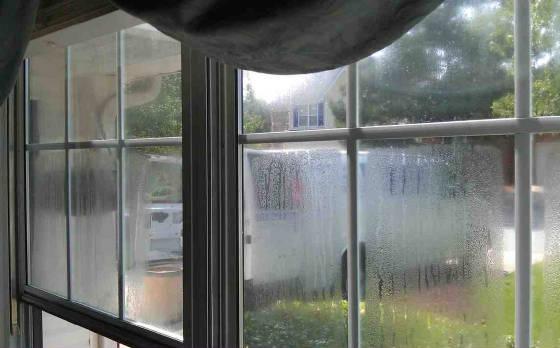
Photo: Glass and Window Repair of St. Louis
It is probably very safe to assume that we are all very aware of the concept, and potential impact of, relative humidity. Whether you live in Upstate New York or Florida, humidity is almost always on the minds of homeowners during both the summer and winter months. Too much humidity and you find yourself sweating profusely as your body tries to regulate its temperature; too little humidity and you suffer from dry skin, nosebleeds, headaches, and more.
What is relative humidity?
Essentially, relative humidity relates to how much water vapor is in the air relative to the amount that would be present if the air were fully saturated. Warmer air can "hold" more moisture than cooler air, so exactly when saturation can occur is dependent upon the given temperature of the air (think dew point).
That last sentence is where we are going to focus. Just for the record, air does not actually “hold” moisture, but we are going to use that term for the sake of this conversation.
Where can humidity be seen in a home?
Have you ever seen water droplets or fog on the interior of one of your windows? Maybe every surface of your bathroom is either fogged over or has a noticeable bit of water on the surface after a nice hot shower. Perhaps your kitchen windows are fogged over after cooking a nice meal.
All of these circumstances are related to the amount of water vapor in the air and the temperature of the surfaces around that air. When the moist air encounters a surface of lower temperature, the air contracts and can no longer hold the same amount of vapor, eventually depositing it on the surface that was at or below the dew point temperature – in the examples above, your windows. It’s important to picture the surface of the window as its own micro-climate. While the room might seem comfortable, there is an issue within that climate that can lead to wood rot and mold.
What can happen if relative humidity is too high?
Relatively speaking, therein lies the point of this blog. Relative humidity should not be taken at face value (a single point of measurement). These micro-climates exist all over your house. Discrepancies in surface temperatures, leading to air reaching its dew point, can and do result in colonization of molds, a water supply for dust mites, and can lead to many other problems. This can happen behind your bed, in the corner of your bathroom, on the baseboard behind the couch, or anywhere the surface temperature is sufficiently lower. Remember, it doesn’t always have to be a large difference in temperature to cause these issues, and it can happen out of sight (inside the wall or behind the trim)!
To address relative humidity issues, the best thing to do is have a BPI GoldStar Contractor perform an energy audit to check your insulation and air sealing levels, and assess your mechanical ventilation options. Take this step to proactively deal with relative humidity issues and keep your home comfortable and healthy.

Follow us